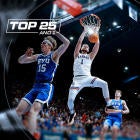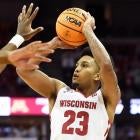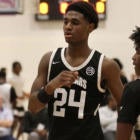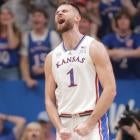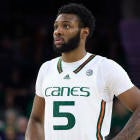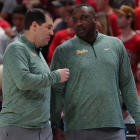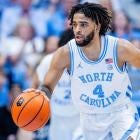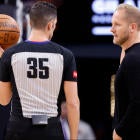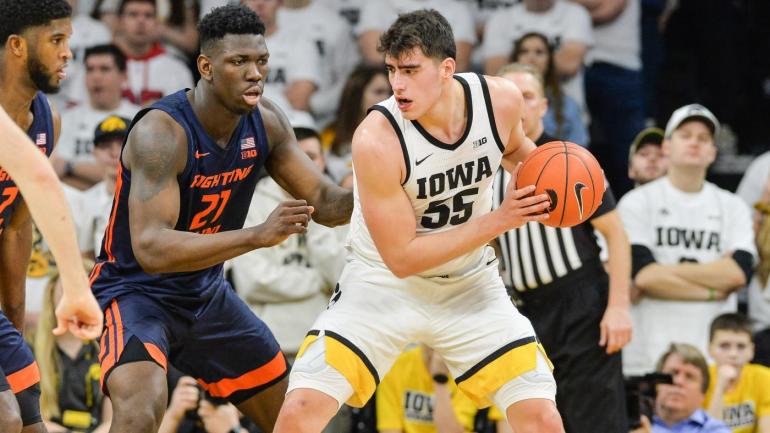
With the Division I Council expected to vote Wednesday to formalize the start date of college basketball's regular season, the light is finally at the end of the tunnel for the sport's offseason. It's been an uncertain six months for the sport since the NCAA Tournament's cancellation. Most notably, disruptions to the recruiting calendar and changes to offseason workouts forced coaches to deviate from their routines. Players considering leaving for the NBA Draft also faced a disjointed predraft process that impaired their ability to receive quality feedback from NBA teams.
There are still plenty of questions about what the upcoming season will look like, but with college football underway and COVID-19 testing advancements coming, it appears certain now that there will be a college basketball season. Barring disaster, there should be some nonconference action before the calendar flips to 2021 as well.
So as we creep closer to the return of college basketball, let's reflect on the winners and losers of the offseason.
Winner: Florida State keeps momentum going
Leonard Hamilton is capitalizing on his program's ACC regular-season title by assembling an impressive recruiting class. It won't finish this way, but the Seminoles are atop the recruiting rankings for the Class of 2021 right now, according to 247Sports. With five-star guard Jalen Warley and a trio of four-star players committed, FSU is on track for what could rival the program's 2016 class as the best in school history. That 2016 class included eventual lottery pick Jonathan Isaac and finished No. 4 nationally. The 2021 class is shaping to be deeper and could also be a top-five class once it's all said and done.
FSU will also find the offseason spotlight again on NBA Draft night -- whenever that ends up being -- as the Seminoles could have Patrick Williams and Devin Vassell selected in the first round. FSU really is a basketball school now, isn't it?
Itching for more college hoops analysis? Listen below and subscribe to the Eye on College Basketball podcast where we take you beyond the hardwood with insider information and instant reactions.
Loser: Memphis, Kansas and NC State still waiting
Visitors to the website for the new Independent Accountability Resolution Process for NCAA rules violators are greeted by a large red box with a message. It asserts the timeline, including the "release of decisions," remains intact, even though hearings and arguments will be conducted virtually when possible.
That's great. The only problem for Memphis, Kansas and NC State is that there seems to be little clarity on what that timeline is. The Memphis case, which presumably centers on the recruitment of former No. 1 overall prospect James Wiseman, became the first to be entered into the IARP process in March. NC State's case entered the process in May, and the Kansas case entered the process July 1.
If these schools are going to be hit with postseason bans, they might like to know before the season begins. There is no appeals process for IARP decisions, so the committee's decisions will be final. While there may be some relief knowing the decision is theoretically in the hands of an independent body and not the NCAA, these three programs are serving as the guinea pigs of a new process that is still rather mysterious. In an already uncertain time for college basketball, that's surely supplying some additional anxiety for the programs involved.
Winner: Villanova and Michigan avoid disaster
In a year full of disasters, there's something to be said for avoiding another one. Michigan and Villanova each avoided a doomsday scenario when their coaches released statements clarifying they would not be pursuing NBA jobs. Given the financial restraints of the pandemic and the timing of the NBA's coaching carousel, it would have been especially undesirable for either program to conduct a coaching search right now.
Maybe the Wolverines could have tried to lure John Beilein back on the cheap after his failed stint coaching the Cavaliers. But given the timing, a promotion from within may have been the move for both programs. Both programs are immensely better off because their coaches are staying put.
Loser: The ACC's all-inclusive NCAA Tournament proposal
The ACC basketball coaches made some headlines and got people talking about college basketball with their audacious proposal of an all-inclusive NCAA Tournament. That seems to be about all they accomplished. The NCAA has been clear it is not planning to expand the field of the 2021 tournament. Ultimately, the ACC coaches' bizarre proposal seems like a lot of wasted breath.
It also served to illustrate how disconnected the various leadership structures in the sport remain. If the ACC coaches really wanted to push for an all-inclusive tournament, getting some of the other power-conference coaches on board would have been smart. But that would have required foresight, planning and organization. This year has revealed time and again that those attributes are absent from the current structure of college sports.
Winner: The Big Ten gets good news
The decisions of Marcus Carr (Minnesota), Ayo Dosunmu (Illinois), Kofi Cockburn (Illinois), Aaron Henry (Michigan State), Trayce Jackson-Davis (Indiana), Isaiah Livers (Michigan) and Luka Garza (Iowa) to return to college cemented the Big Ten's status as the nation's deepest league. Ten teams from the conference were destined to make the 2020 NCAA Tournament, and that total could climb even higher this season. Carr's decision to return to Minnesota and the fact that the Golden Gophers are getting transfer Liam Robbins eligible immediately could help push them onto the right side of the bubble.
If Purdue can have a bounce-back season and Penn State finds a way stick in the league's middle class after the graduation of leading scorer Lamar Stevens, it's conceivable the league could put 11 teams in the Big Dance. That wouldn't have been possible without so many players choosing this offseason to return to college.
Loser: The NCAA Tournament selection committee
The NCAA selection committee always faces a monumental task. But narrowing the field to 68 teams is normally somewhat formulaic with specific, nuanced criteria guiding the way. This year, it may be a crapshoot. Unless NCAA leaders find a change of heart and decide to embrace the all-inclusive proposal, they may end up using the eye-test more than they'd like.
It remains uncertain exactly how the nonconference schedule will play out, which is a key evaluation tool for the selection committee. Also, how will the selection committee handles instances where contact tracing impacts the outcome of a game? If Eastern Illinois beats Kansas but the Jayhawks were missing three starters who live in an apartment with someone who tested positive for COVID-19, would it still count as a Quadrant 4 loss? What if an AAC program dependent on nonconference games to build its NCAA Tournament resume experiences an outbreak and can't participate in a multi-team event? It will be tough to judge their postseason worthiness based solely on the conference schedule and whatever regional nonconference games it can cobble together.
Bracketology figures to be an especially inexact science this season, and that will make the selection committee's job harder than it already is.













